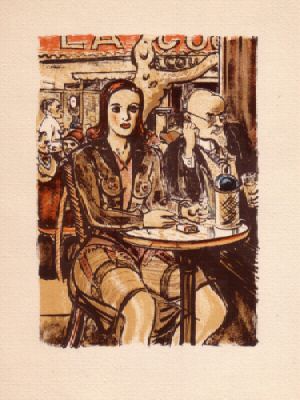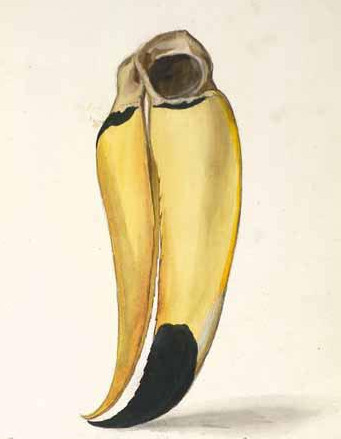So I wrote this essay abot the the essential dichotomies between things and why they are mostly bubkiss, so I will share it with you, my loyal (which is to say, non-existant) readers. Click bellow to read more.
Nobody really knows what Stendhal was referring to with the title “The Red and The Black” for his psychological novel of the post-Napoleonic France of the 1830. The popular theories all require that the colors represent opposite sides in a dualistic conception of society, the Army (Black) versus the Church (Red); or the opposing forces in protagonist Julien’s mind, realism (Black) and idealism (Red). I like to think that the desire to symbolize conflict in a dual color scheme is endemic to human thought—we are very visual creatures—and thus eminently appropriate in the context of this supremely human work of art. Examples across histories and cultures of similar schema are as numerable as they are obvious, and I will not trouble with them here. But one current example springs to notice, especially here at a major law school that is almost by definition politically engaged and charged: The Red and the Blue.
“The Red and The Black” is Al Gore’s favorite book according to the answer he gave to a ridiculous question during the 2000 campaign. George W. Bush’s response to the same ridiculous question: “The Bible.” I say it is ridiculous because the idea that a person’s favorite book is indicative of their capacity to lead is a silly idea. But it is an idea that persists in the Red and the Blue. When it came out that 22% of people voted on the basis of “values” in the last election the Culture Wars were reignited on the newly realigned axis of blue and red. The result is the preposterous idea that there are separate and discrete cultures native to Blue and Red states. Silliness carried to an extreme, the idea was pushed further to include the though that those two cultures never overlapped. As a native and voting citizen of a red state I attend a large evangelical church, am a fan of football and NASCAR, I despise nuance as wishy-washy and respond to forceful, moral leadership from “regular guys”. Sadly, none of this is true. I am a lapsed Catholic, I do not really like watching sports (sometimes I do: baseball, and the World Cup is usually good), I dislike simple declarative phrases and instinctively distrust those that would employ them, and I find forceful “regular guys” to roughly correspond with that set of individuals whom I think suck. Also growing up in an around Boulder means I was exposed to a significantly more liberal atmosphere than many of my fellow students from New York or Los Angeles (the traditional Sodom and Gomorrah analogue for American conservatives).
Besides, the stereotypes about the red and the blue are wrong. I had an English professor who deplored generalizations in writing and often claimed that: “All generalizations are false, including this one.” So beware the red and the blue. More people as a percentage of the total go to church in Texas than in Massachusetts, but more people as a percentage of the total get divorced or have teen pregnancies in Texas than in Massachusetts.
The truth is that as far as French novels go “Madame Bovary” is infinitely more applicable. The US is the home to the single largest amount of bourgeois striving and middle-class paranoia in the history of the human species. That is the real culture of America (as separate to the “ideal” of a red and a blue opposition.) We are the nation that loves “The Price Is Right” and no amount of cultural studies theses can say more than that. It’s capitalism and class mobility and the allure of competitive chance and individual triumph; it’s also pure schlock. It is lumpen, garish, and tacky. It is overweight and under-classy. The Price Is Right, indeed. People are looking for sales and watching reality TV in Mobile, Alabama at roughly the same rate as in Santa Cruz, CA. Starbucks, a business Bill O’Reilly shuns as a symbol of liberal elitism, what with the European sounding names of the drinks, in favor of Long Island coffee shops where “cops and firemen hang out,” was where I studied in college. And the Starbucks near the University of Arizona (a red school in a red state) was frequented by—say it with me—cops and firemen. (Of course, Bill O’Reilly communing with cops and firemen is odd in an O’Reilly-ian Universe, given his Harvard degree and multimillion dollar Manhattan occupation and thus, his presumed inability to understand the regular folks, but that is the advantage of being O’Reilly in an O’Reilly-ian universe).
It is the simple fact of the matter that red culture and blue culture are idealized extremes of the main mass of culture to be found across the majority of the United States. Yes many if not most American’s are church going and god fearing in a wholesome down home way (even in godless California—which gave us Ronald Reagan). But an extreme few of those people could be said to at all resemble fundamentalists like the ones who send their children to Bob Jones University. And yes, most Americans support the Kyoto Protocol. But an extreme few support the party platform of the Greens. The fact that these extremes are encompassed in a self-consciously plural society should bring pause to absolutely nobody. It is entirely common and expected. The fact that the fat part of the curve cannot be shoved into two different oppositional camps based on one day’s deed is, however oddly, considered a heresy when it should be a self-evident truth (to paraphrase some guy.)
David Brooks be damned, red and blue America do not exist. Local populations can have unique cultural expression within a larger whole, but the idea that “local population” should encompass an area from the Canadian border to the Florida Keys is truly strange. I would wager that the difference between Los Angeles and San Francisco is much greater than the difference between Bethesda, Maryland and Alexandria, Virginia. You see, culture exists so far outside the narrow political discourse of it that political markers are almost completely meaningless in determining cultural identities composed of a relentless lot of facets. This is one of the reasons that David Brooks is himself relentlessly full of it.








0 Comments:
Post a Comment
<< Home